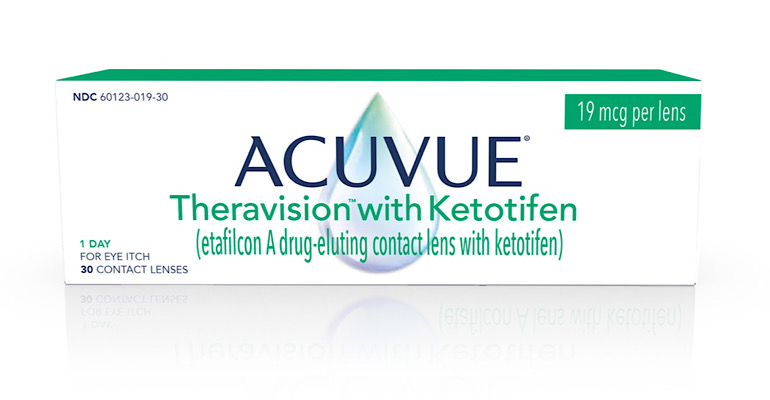
Johnson and Johnson’s Vision Care unit has received FDA approval for its Acuvue Theravision with Ketotifen, a drug-eluting contact lens that could potentially eliminate the need for eyedrops for contact lens wearers suffering from allergic eye itch. This approval comes after the product was given the green light for use by the Japanese Ministry of Health almost a year ago.
In an interview with MD+DI, Brian Pall, Director of Clinical Science at Johnson & Johnson Vision Care, expressed that there was a high demand for the product. He explained that the popularity of the drug-eluting lens stemmed from its intuitive and logical design. Pall stated, “It all starts with the unmet need. Right now, 40% of contact lens wearers suffer from itchy-allergy-eyes. When we talk to them and ask them about when they have these itchy-allergy-eyes when wearing contact lenses about 80% say they’re frustrated. It really impacts their quality of life – the ability to do the things they want to do…”
Each lens contains 19 mcg of ketotifen, a well-established antihistamine. The vision care unit collaborated with J&J’s Janssen for the antihistamine component. Pall emphasized that this breakthrough was the result of a strong collaboration between various teams and partners.
The FDA approval follows positive Phase 3 clinical studies published in the journal Cornea. These studies demonstrated a significant reduction in itchy allergy eyes within three minutes of lens insertion, with effects lasting up to 12 hours. It is important to note that the lens can be worn for longer than 12 hours for vision correction.
Developing medication-releasing contact lenses has been a challenge for companies over the past 60 years, with many unsuccessful attempts. Pall acknowledged the difficulties involved in this process, particularly in finding the right combination of medication and contact lens material that are chemically compatible and allow for proper drug release.
While Pall did not discuss any specific projects, he expressed excitement about the potential of contact lenses in the future. He stated, “The next breakthrough will be how can we continue to bring innovation to really help to enhance, to correct, and restore people’s vision. That’s what gets me excited to be an R&D person – to be able to be on that cutting edge and really look for these difficult challenges on how to make patients’ lives better through contact lenses or other medical devices.”

